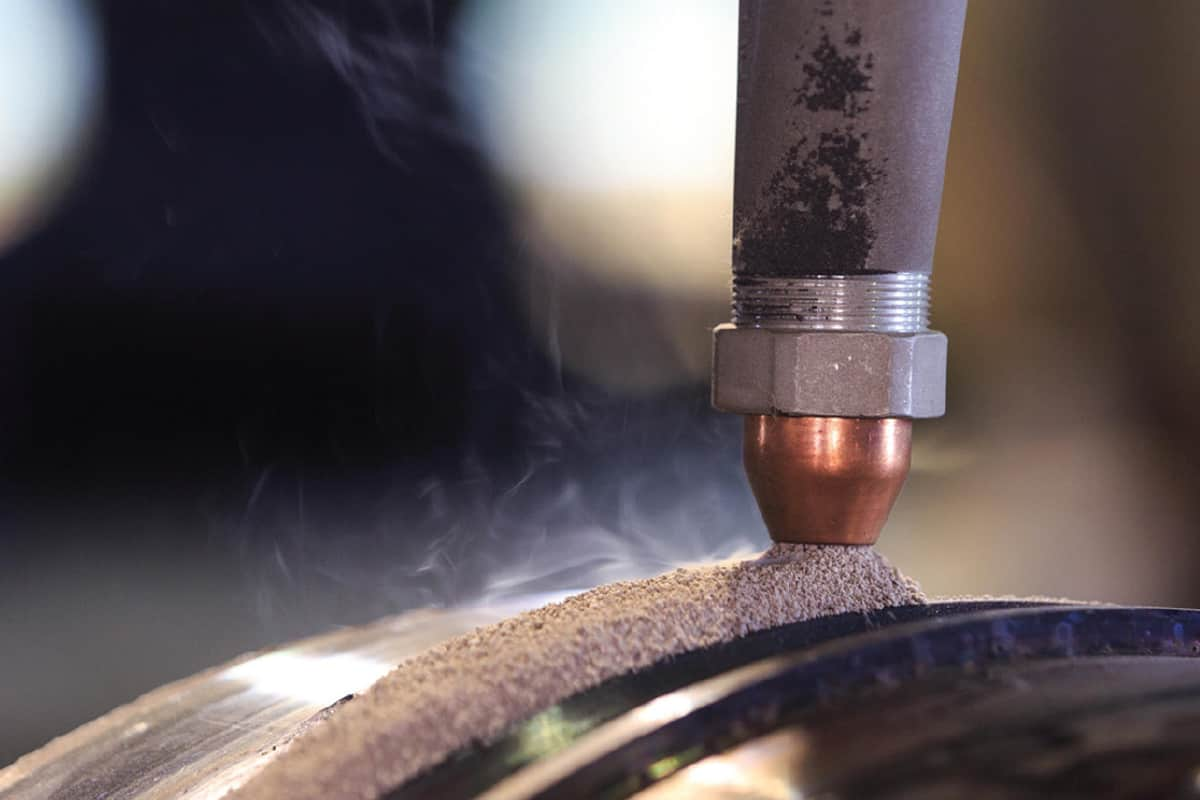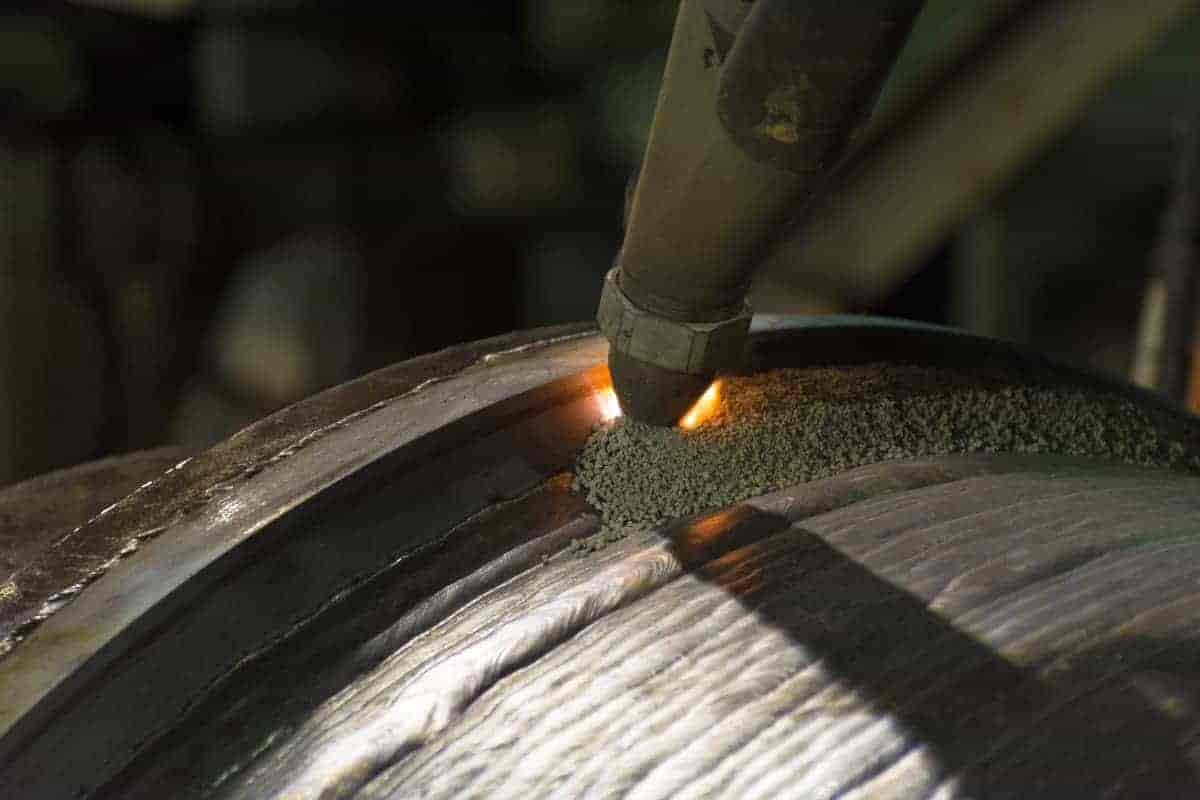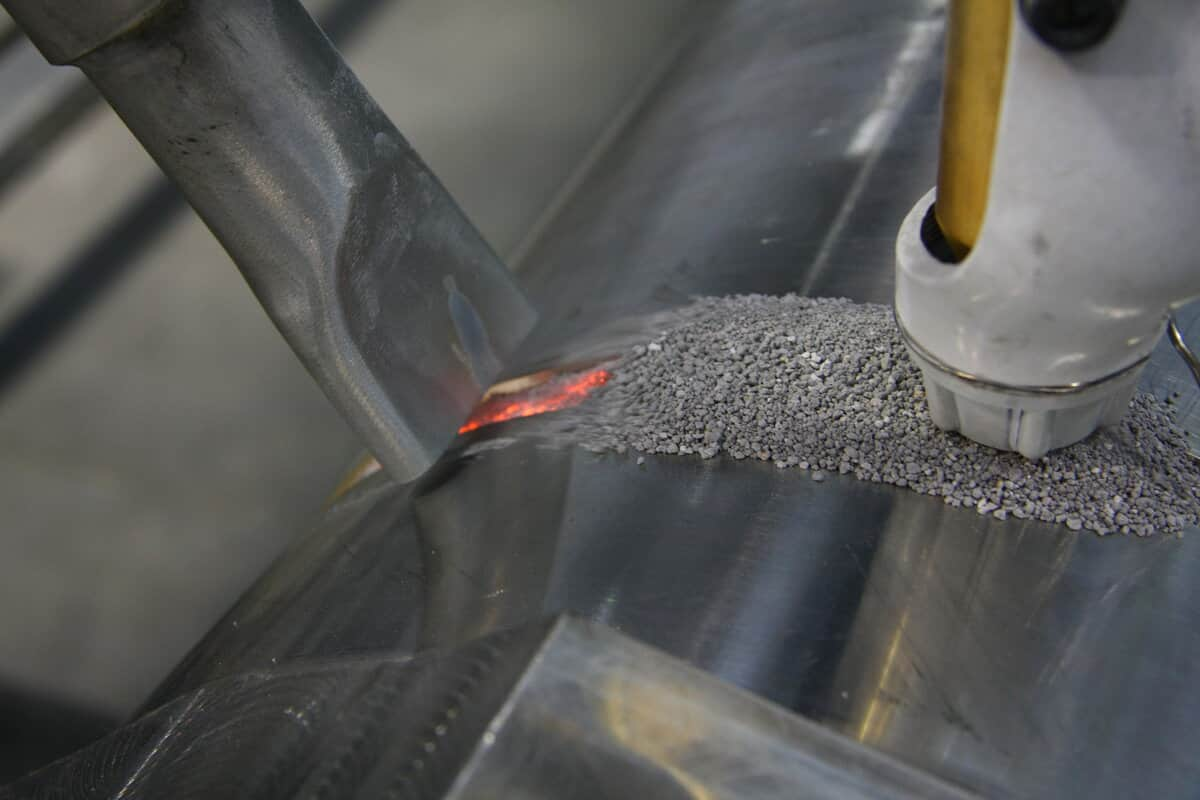There are different types of submerged arc welding flux, and each of them has its own advantages and disadvantages compared to each other.
Submerged arc welding flux types
There are two types of flux in submerged arc welding: fused flux and unfused flux (bonded flux and agglomerated flux). 1-Fused Various mineral materials are mixed in the ratio shown in the formula, then heated and melted in an electric furnace at 1300℃. The molten materials are mixed in water, granulated, and sieved to finally obtain the molten flux. Raw materials include fine ores of manganese, silica, magnesite, fluorite, quicklime, and ilmenite, in addition to cryolite and borax. All raw materials must go through a drying process at 150-200℃ to remove excessive moisture content. Due to the high-temperature melting process, the addition of carbonate, deoxidizer, and alloying agents is not possible. It's hard to make solid base flows. In addition, it is impossible to maintain the proportion of raw material after the melting process. The finished products are composites. Fused fluxes are classified into glass-like fluxes, crystal fluxes, and pumice fluxes based on the grain structure. The bulk density of vitreous flux and crystal flux is 1.1-1.8 g/cm3, while the bulk density of pumice flux is 0.7-1.0 g/cm3.  2-Unfused The unmelted flux is obtained by this process: different materials in powder form are mixed with a binder. They are then transformed into particles of specific particle sizes. The final process is drying or sintering. The raw materials used to make unfused flux are like the materials used to make electrode coatings. The difference is that unmelted materials have strict compositional and particle size requirements. The powders are mixed in proportion to the addition of binders to obtain wet materials. Wet materials are made into granules, usually 0.5-2mm. The wet pellets are then sent to a rotary dryer for solidification and drying at 150-200℃. Finally, they are fed into a rotary kiln for the sintering process. Unmelted fluxes are divided into two categories according to the sintering temperature:
2-Unfused The unmelted flux is obtained by this process: different materials in powder form are mixed with a binder. They are then transformed into particles of specific particle sizes. The final process is drying or sintering. The raw materials used to make unfused flux are like the materials used to make electrode coatings. The difference is that unmelted materials have strict compositional and particle size requirements. The powders are mixed in proportion to the addition of binders to obtain wet materials. Wet materials are made into granules, usually 0.5-2mm. The wet pellets are then sent to a rotary dryer for solidification and drying at 150-200℃. Finally, they are fed into a rotary kiln for the sintering process. Unmelted fluxes are divided into two categories according to the sintering temperature:
- A) Solder flux (or ceramic flux). Water glass is generally used as a binder. The sintering temperature is 350-500℃. Due to the low sintering temperature, the bound flux is more hygroscopic and has lower particle resistance. This product line is now small in China.
- B) Crowded flow. The sintering temperature is 700-1000℃. After sintering, the particles are ground into granules of a certain size. The sintering process improves the strength of the pellets and significantly reduces hygroscopicity.
Compared to molten flux, sintered flux has a higher melting point and lower bulk density. Therefore, sintered flux is suitable for plating with high energy input. The flux can adjust the basicity to a large extent while maintaining good welding performance. Transferring from the alloy to the molten metal is possible. Due to the wide range of applications and the simple manufacturing process, crowded flows have developed rapidly in recent years. 
Fused flux submerged arc welding
In the production of molten fluxes for submerged arc welding, the raw materials are dry-mixed and then melted or melted in a liquid state using a high-temperature furnace. Once melting is complete, the streams are cooled. This can be done with a water jet or large cooling blocks. After the fluxes have cooled, they are crushed or ground into particles. A variety of particle sizes are manufactured to ensure optimum performance for different applications. Benefits of fused fluxes include: Non-hygroscopic flux particles do not absorb moisture and therefore any surface moisture can be removed simply by drying the particles at a low oven temperature of 300 degrees F. Low-temperature drying of the condensate on the molten flux particles provides better protection against hydrogen cracking. Flux particles create chemically cohesive welds. Recycling of molten flux particles by flux recovery systems can be accomplished without loss of size or composition. A disadvantage of molten fluxes is that the high temperature used during the manufacturing process makes it difficult to add alloys and deoxidizers. 
Neutral flux submerged arc welding
As the name suggests, neutral fluxes remain neutral; do not significantly affect the chemistry of the weld metal. This is advantageous when making hard, crack-free multi-layer welds. Neutral fluxes have no material thickness limits, are not very parameter sensitive, and have minimal impact on weld impact properties. Flux neutrality describes how much flux can influence the chemical composition of the molten metal. A flow is either active or neutral. Neutral fluxes are welding additives that barely change the mechanical properties of the weld metal when the voltage is adjusted. This makes them ideal for welding thicker sections of sheet metal. Although not as widely used as other types of welding consumables, neutral fluxes can be an invaluable tool in certain situations. When selected and used correctly, they can help improve weld quality while reducing the overall cost of the welding project. Active fluxes can provide more unique soldering properties because they actively influence solder chemistry. Additional manganese and silicon from active fluxes alloy solders to compensate for high dilution solders. Active fluxes are best for one or two-pass fillet and fillet welds and are generally not recommended for large multi-pass welds. These fluxes often improve weld cleanliness and help operators produce quality welds on lightly rusted or pitted materials. Many active flow formulations also help maintain good bead contour at high travel speeds. Remember that active fluxes are very parameter sensitive, so it is important to follow the manufacturer's recommendations for operating parameters and always maintain good control of the welding process. Also, note that some welding codes restrict or prohibit the use of active fluxes in certain applications. As a general rule, consider neutral fluxes for general applications and active fluxes for fast single or double-pass soldering. The use of neutral fluxes has several advantages. One of the benefits is that they can help improve the quality of welds. Another benefit is that they can help reduce the overall cost of the welding project. Ultimately, they can help improve productivity. 
